Once your community is up and running, you’ll need ways to measure your success. It’s important to have concrete parameters for this, to judge how well your community strategy is working. There are a number of different community KPIs that can be measured to provide a good idea of the health of your community.

If all else fails, turn your monitor off and look at a clipboard.
Community KPIs
Questions Answered
Simply keeping track of how many enquiries your staff (or diligent community members) are able to answer can be a good indicator of success in your community. The fact that users are interested in your products and their questions are being answered quickly and accurately speaks to the utility they’re receiving from it.
Leads Created
The one that makes you the best friend of the sales team. Looking at the number of sales leads that have been created is one of the most concrete ways of showing that your community is generating revenue for your business. Adding integration to a service like Salesforce makes it simple to track these statistics.
Changes in Call Ticket Volume
Deflecting support tickets is one of the primary advantages of a support community, but how do you measure the tickets that you never ended up seeing? Look at the volume of calls that you’re receiving compared to before your community initiative, and then normalise that number to any other external factors that may have affected it. For instance, if the call volume has gone up but your company’s revenue have also increased, you should account for this in your statistics.
Time to Resolution For Tickets and Other Issues
These are a no-brainer for support communities. If your community is helping you to resolve tickets faster, it’s likely to be paying for itself in terms of resources. As with sales leads, tying your community into dedicated support software such as Zendesk can make it much easier to keep track of this metric.
Community Health
Measuring the health of your community can be a little trickier than other KPIs, because it can’t be entirely based on numbers. Certainly, there are metrics that can be measured, but it’s important to normalise these against more subjective concerns. There are a lot of busy forum communities on the internet that get great traffic, but have a poorly managed and toxic userbase. Any community manager who’s ever overseen a crisis can tell you that a thousand new users can be a bad thing, if they’ve only joined to spout abuse and venom at the populace. Clear metrics that you can use include:
New Members
With that caveats out of the way, new users are generally a good way of measuring the health of your community. They can bring fresh perspective, fresh input and fresh hits for your advertising if you’re so inclined. While this number ticking upwards isn’t always a sign of a healthy community, a community without new members is on the road to stagnation.
Active Members
Membership count is nice, but it’s just a number. The heart of your community is its active members. You can normally expect to see a group of core members who post much more than the average. Keep an eye on this metric, because these members are the ones you’ll find easiest to convert into the valuable brand advocates that are so vital to the success of your community. Even if other metrics are going up, a lower count of active members means that there may be a hole in the boat somewhere.
Content Volume
This is an important metric for most communities. How many comments and discussions are your members generating? It’s good to have high numbers, but also for there to be an anchor point between them. For example: if your members are generating a vast number of discussions but few comments, you’re undoubtedly seeing a lot of low quality, unengaging content in your community. Conversely, seeing a vast number of comments in a small number of discussions can mean that you community is stagnating, and members are staying in their own little treehouses. Normalise these statistics against your member activity counts, and the subjective qualities of your board to find out what they really mean.
(197)







